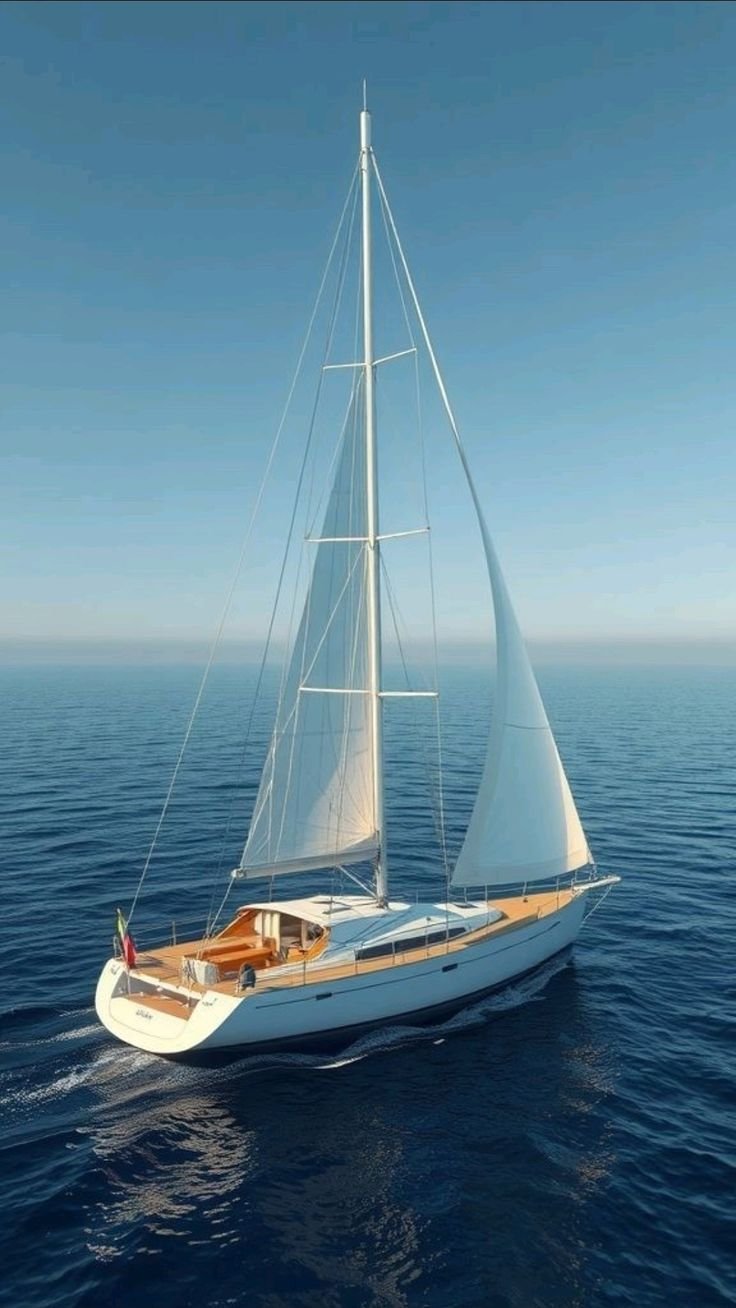Modern Sea Expeditions: Sailing Into the Unknown
Introduction: Humanity’s Endless Fascination with the Ocean
For thousands of years, the sea has captivated human imagination—an endless expanse of mystery, beauty, and danger. From the earliest Polynesian navigators to legendary explorers like Ferdinand Magellan, Captain Cook, and Jacques Cousteau, the ocean has been both a pathway and a frontier. Yet, even in the 21st century, the ocean remains one of the least explored realms on Earth. Over 80% of the seafloor is still unmapped, and much of the deep sea is as unknown to us as outer space. Modern sea expeditions, armed with advanced technology and driven by scientific curiosity, are venturing farther than ever before—into the depths, the darkness, and the unknown.
The New Age of Ocean Exploration
Gone are the days when exploration meant wooden ships and simple maps. Today’s sea expeditions are high-tech ventures combining robotics, satellites, artificial intelligence, and global cooperation. Modern explorers are not just chasing adventure—they are uncovering the ocean’s crucial role in regulating Earth’s climate, sustaining biodiversity, and preserving human history.
Institutions such as OceanX, NOAA (National Oceanic and Atmospheric Administration), and the Schmidt Ocean Institute are leading cutting-edge missions to understand marine ecosystems, underwater geology, and the effects of climate change. These expeditions are as much about preservation as discovery. They reveal how interconnected all life on Earth truly is and remind us that the health of the oceans determines the health of the planet.
Technology Beneath the Waves: Tools of Discovery
The new generation of explorers rely on technology that allows them to go where no human can. Remotely Operated Vehicles (ROVs) and Autonomous Underwater Vehicles (AUVs) are revolutionizing deep-sea exploration. These machines can dive thousands of meters below the surface, capturing high-definition images, collecting samples, and mapping the seafloor with extraordinary accuracy.
Advanced vessels like OceanXplorer and Falkor (too) serve as floating laboratories equipped with sonar systems, robotic arms, and 3D imaging technology. Artificial intelligence is also being used to analyze vast amounts of oceanic data, predicting currents, mapping coral reefs, and identifying new species. With these tools, scientists are no longer limited by human endurance or danger—they can explore the deepest trenches and darkest abysses of the planet.
OceanX: Exploring and Inspiring the World
Among the most prominent modern expeditions is OceanX, a global initiative merging science, exploration, and storytelling. Founded by entrepreneur Ray Dalio and led by renowned oceanographer Vincent Pieribone, OceanX’s mission is to explore the ocean and share its wonders with the world through stunning visual storytelling.
Their research vessel, OceanXplorer, is equipped with state-of-the-art laboratories, submarines, and media studios that can broadcast discoveries in real time. OceanX’s expeditions have uncovered hidden coral ecosystems, filmed never-before-seen creatures, and discovered shipwrecks lost for centuries. By making scientific exploration visually accessible, OceanX rekindles global curiosity and motivates a new generation to protect the oceans.
Mapping the Unknown: Seabed 2030 and Beyond
Despite centuries of navigation, most of the ocean floor remains uncharted. The Seabed 2030 Project, launched by the Nippon Foundation and GEBCO, aims to create a complete map of the world’s seafloor by 2030. This global initiative uses sonar-equipped vessels, underwater drones, and satellite data to fill in the vast blanks of our planet’s underwater landscape.
Detailed seafloor maps are critical for understanding ocean circulation, predicting natural disasters like tsunamis, and guiding conservation efforts. Mapping the deep ocean also aids in locating resources responsibly and understanding how underwater geography influences marine life and climate systems. For modern explorers, this mission represents one of the greatest challenges of our time—a planetary puzzle waiting to be completed.
Discovering Life in the Deep
Modern expeditions have shattered our assumptions about where and how life can exist. In the pitch-black depths, where sunlight never reaches and pressure is immense, life thrives in extraordinary forms. Using robotic explorers, scientists have discovered bioluminescent creatures, giant squid, and microorganisms living near hydrothermal vents, where temperatures can exceed 400°C.
These discoveries have rewritten biology textbooks, showing that life can survive without sunlight, using chemicals instead of photosynthesis to produce energy. This process, known as chemosynthesis, has implications beyond Earth—it suggests that life could exist in similar environments on icy moons like Europa or Enceladus. Each dive into the abyss reveals not just new species, but entirely new ways life adapts and evolves.
Preserving History: Shipwrecks and Sunken Cities
The ocean is also Earth’s greatest time capsule. Beneath its surface lie the remains of shipwrecks, ancient trade routes, and submerged cities that hold clues to our past. Modern expeditions have made groundbreaking discoveries, such as the Endurance, the long-lost ship of polar explorer Ernest Shackleton, found in 2022 beneath Antarctic ice—remarkably preserved for over a century.
Using advanced sonar imaging and robotic submersibles, marine archaeologists have uncovered Roman vessels, WWII submarines, and entire lost ports. Each discovery adds another chapter to the human story, connecting us to those who braved the same seas centuries ago. The ocean, in many ways, is a vast museum—one that modern technology is finally beginning to unlock.
The Polar Expeditions: Exploring Earth’s Cold Frontiers
Among the most ambitious modern sea expeditions are those venturing into the Arctic and Antarctic Oceans. These regions are vital to understanding climate change, as melting ice affects sea levels, weather systems, and marine habitats worldwide.
Research vessels such as RV Polarstern and Nathaniel B. Palmer brave treacherous conditions to collect data on ocean currents, plankton populations, and ice formation. Their findings help scientists predict how rapidly Earth’s climate is changing and what that means for global ecosystems. These expeditions are not just about exploration—they are about survival, offering humanity a glimpse into the planet’s fragile balance.
Women at the Helm of Ocean Exploration
Modern ocean exploration is being shaped by inspiring women scientists, engineers, and explorers. Icons like Dr. Sylvia Earle, often called “Her Deepness,” have led countless dives and founded initiatives like Mission Blue, which designates “Hope Spots”—critical ocean regions that need protection.
Dr. Ayana Elizabeth Johnson and Dr. Katy Croff Bell are also pioneering new ways of combining science, storytelling, and policy to safeguard marine life. Their work proves that the spirit of exploration is no longer defined by gender or geography but by passion and purpose. With their leadership, the next era of exploration will be more inclusive, global, and impactful than ever before.
Private Ventures and Citizen Exploration
Beyond governments and research institutes, private explorers and organizations are pushing boundaries. Billionaire adventurers and philanthropists are funding missions that complement scientific research. Victor Vescovo’s Five Deeps Expedition, for example, achieved a world first by reaching the deepest points in all five oceans using the submersible DSV Limiting Factor.
At the same time, citizen science projects are engaging ordinary people in ocean monitoring—tracking coral bleaching, plastic pollution, and whale migrations. Through these efforts, ocean exploration becomes a shared mission, reminding us that protecting the sea is everyone’s responsibility.
Challenges Beneath the Surface
Despite technological progress, modern sea expeditions face enormous challenges. Deep-sea exploration is costly, physically demanding, and environmentally sensitive. Pressure, darkness, and cold temperatures make data collection difficult. Additionally, the vastness of the ocean means that exploration can take years, even decades, to produce results.
Another major challenge is marine conservation. As scientists explore deeper, they also witness the devastating effects of pollution, overfishing, and climate change. Plastic waste has been found even in the Mariana Trench, and coral reefs are bleaching at alarming rates. The explorers of today must therefore balance discovery with responsibility—protecting what they study and ensuring that future generations inherit a living, thriving ocean.
The Future of Sea Exploration
Looking ahead, the next frontier in ocean exploration will be driven by artificial intelligence, robotics, and global collaboration. New submersibles are being developed to withstand greater depths for longer periods, while AI-driven mapping systems can analyze ocean data faster than ever before.
Future expeditions will focus not only on discovery but also on restoration—reviving coral ecosystems, cleaning plastic debris, and understanding how the ocean can help fight climate change through carbon absorption. The dream of mapping every ocean floor and identifying every species may still be far away, but each expedition brings humanity closer to understanding our planet’s most vital and mysterious realm.
Conclusion: Sailing Toward the Unknown Future
The ocean remains the Earth’s greatest frontier—vast, beautiful, and filled with secrets yet to be revealed. Modern sea expeditions represent the continuation of humanity’s timeless quest to explore, to learn, and to protect. They blend cutting-edge science with the enduring spirit of adventure, proving that even in a world connected by satellites and digital maps, mystery still lies beneath the waves.
As explorers, scientists, and storytellers sail into the unknown, they carry with them the hopes of generations past and the responsibility for generations to come. The sea has always been both a challenge and a companion, a mirror of humanity’s courage and curiosity. In embracing it once more, we rediscover not just the depths of the ocean—but the depth of our own potential.


